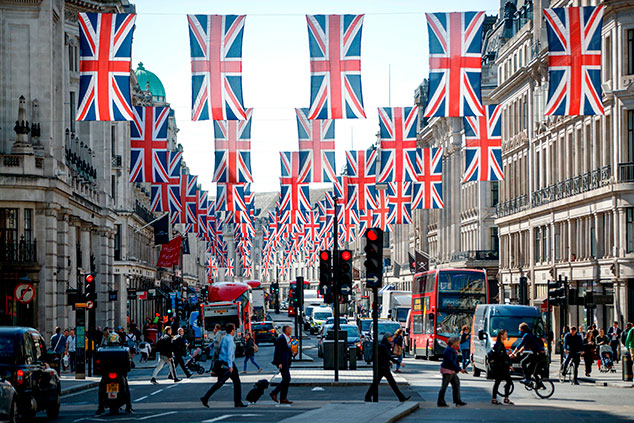
This article is taken from our FREE daily investment email Money Morning.
Every day, MoneyWeek’s executive editor John Stepek and guest contributors explain how current economic and political developments are affecting the markets and your wealth, and give you pointers on how you can profit.
In this week’s issue of MoneyWeek magazine
●
The British software sector stars investors should buy now
●
The ultimate contrarian signal?
●
P2P car loans for subprime borrowers
●
Three stocks that are ripe with opportunity
●
Two funds to profit from Asia’s love for smartphones
● Share tips of the week
Not a subscriber? Sign up here
Wages are rising. Employment is at record levels.
Inflation is relatively tame. The cost of borrowing is low.
House prices are flat or barely rising. The economy is growing.
Where is this paradise?
Chances are, you live there.
What rate is inflation? Take your pick
Yesterday, we learned that inflation in the UK was not as high as expected last month.
Inflation is one of the most politically sensitive national statistics out there. Even the most economically uninterested people get quite engaged when you talk about the cost of living.
You can usually tell how important a statistic is by counting the number of ways there are to measure it. And inflation doesn’t disappoint.
There are many ways to measure inflation. And oddly enough, the measures that the government seems to prefer are the ones that show that prices aren’t rising as fast as you might think they are.
There’s the consumer prices index (CPI). This is the official inflation measure – the one that the Bank of England has to maintain within one percentage point either side of 2%.
CPI in September grew at an annual rate of 2.4%, according to the Office for National Statistics (ONS). That was down from 2.7% in August and also below expectations for 2.6%.
There’s the retail prices index (RPI). This was the basis for the Bank’s old inflation target, although the Bank targeted a version known as RPIX, which excluded mortgage costs from the inflation figures (because if you didn’t exclude mortgage costs, then when the Bank raised interest rates to target inflation, it would in fact drive inflation higher). Under RPIX, the target was 2.5%.
These days, RPI has been cast into the outer darkness as it’s considered to be flawed (if you’re interested in arcane statistical arguments then you can read all the arguments on the Office for National Statistics website).
As a result, it takes a bit of effort (not much, but enough to put off your average newbie journalist with no history of reporting on inflation data) to find it. It also – completely coincidentally, I’m sure – almost always shows inflation to be higher than the CPI does.
RPIX rose at an annual rate of 3.3%, down a bit from 3.4% in August.
There’s another measure that the ONS is currently trying to push very hard. If you look at the inflation data, then before you even get to CPI, you get CPIH. That is, CPI including owner occupiers’ housing costs.
Right now, according to CPIH, inflation is even lower – rocking in at a mere 2.2%.
At the end of the day, we can play around with the statistics all we want. And it’s good to look at these things with a somewhat jaundiced eye. The idea that we need inflation to be rising at a specific level is a very recent conviction and one I suspect that future generations will wonder about.
But we are where we are, and the good news for the Bank of England is that an inflation reading like this gives the central bank all the cover it needs to keep interest rates on hold. That of course, is not great news for savers – but savers are used to that by now, aren’t you?
The UK economy has been in worse condition
So what does all of this point to?
Well, taken as a moment in time, this is all actually rather good news for the UK. First, wages are rising at 2.7% a year (including bonuses) or 3.1% a year without them. You can quibble about why this is (one-off rises for the NHS, for example). But the fact remains that wages are rising more rapidly than they have in quite some time.
If you want to use CPI, this means that wages are rising in “real” terms (after inflation). If you want to use RPI, it means they’re still falling, but less steeply than they were.
If wages are going up, and unemployment is going down, then that means as a whole, consumers are going to have more money to spend. That’s good news.
Secondly, the other big bane of our lives – ridiculously high house prices – shows signs of slowly changing. Using the ONS house prices index, prices went up by 3.2% in August, compared to 3.4% in July (this latter was revised up from 3.1% – not all of the figures are available when the first estimate is released).
So on a national basis, prices are rising a little more rapidly than wages, but nowhere near at the rate they were. And both measures are going in the right direction – wages growth is rising and house price growth is slowing.
It doesn’t mean that any of this will last. It doesn’t mean we’ll get the “beautiful deleveraging” (to steal a Ray Dalio phrase) on UK house prices that we hope for.
But I would suggest that if the national conversation wasn’t being dominated by Brexit, then people would probably be feeling relatively upbeat about the UK economy. And that if the Brexit gloom ever lifts, then having at least some exposure to the UK market might turn out to be a good bet in the longer run.